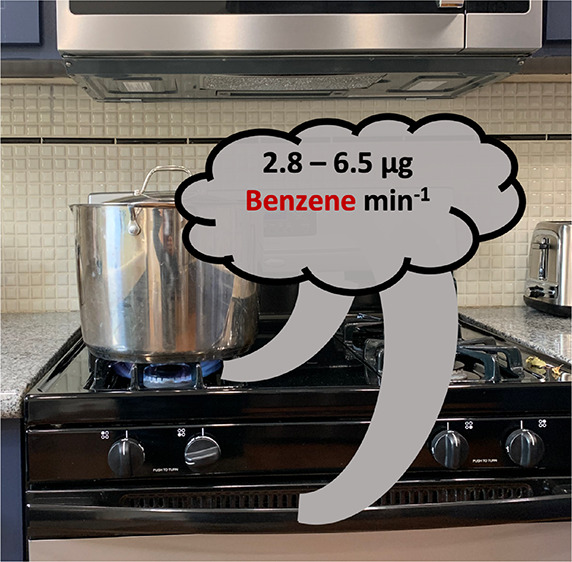- Record: found
- Abstract: found
- Article: found
Gas and Propane Combustion from Stoves Emits Benzene and Increases Indoor Air Pollution

Read this article at
Abstract

Exposure pathways to the carcinogen benzene are well-established from tobacco smoke, oil and gas development, refining, gasoline pumping, and gasoline and diesel combustion. Combustion has also been linked to the formation of nitrogen dioxide, carbon monoxide, and formaldehyde indoors from gas stoves. To our knowledge, however, no research has quantified the formation of benzene indoors from gas combustion by stoves. Across 87 homes in California and Colorado, natural gas and propane combustion emitted detectable and repeatable levels of benzene that in some homes raised indoor benzene concentrations above well-established health benchmarks. Mean benzene emissions from gas and propane burners on high and ovens set to 350 °F ranged from 2.8 to 6.5 μg min –1, 10 to 25 times higher than emissions from electric coil and radiant alternatives; neither induction stoves nor the food being cooked emitted detectable benzene. Benzene produced by gas and propane stoves also migrated throughout homes, in some cases elevating bedroom benzene concentrations above chronic health benchmarks for hours after the stove was turned off. Combustion of gas and propane from stoves may be a substantial benzene exposure pathway and can reduce indoor air quality.
Abstract
Gas and propane combustion in stoves and ovens releases benzene that migrates throughout the home, sometimes elevating concentrations above health benchmarks.
Related collections
Most cited references42
- Record: found
- Abstract: not found
- Article: not found
Better Bootstrap Confidence Intervals
- Record: found
- Abstract: found
- Article: not found